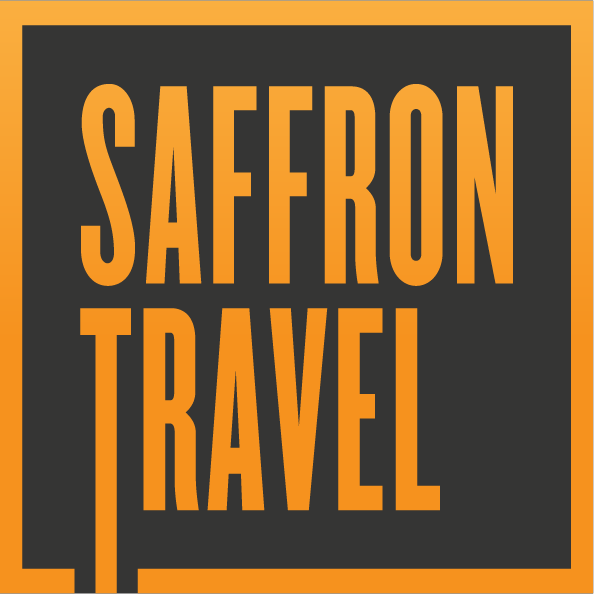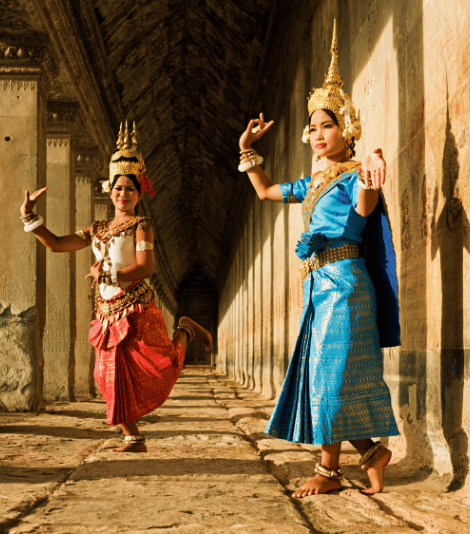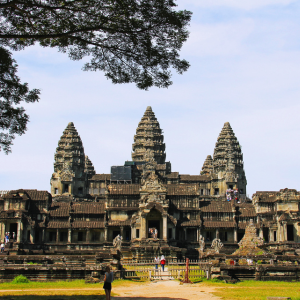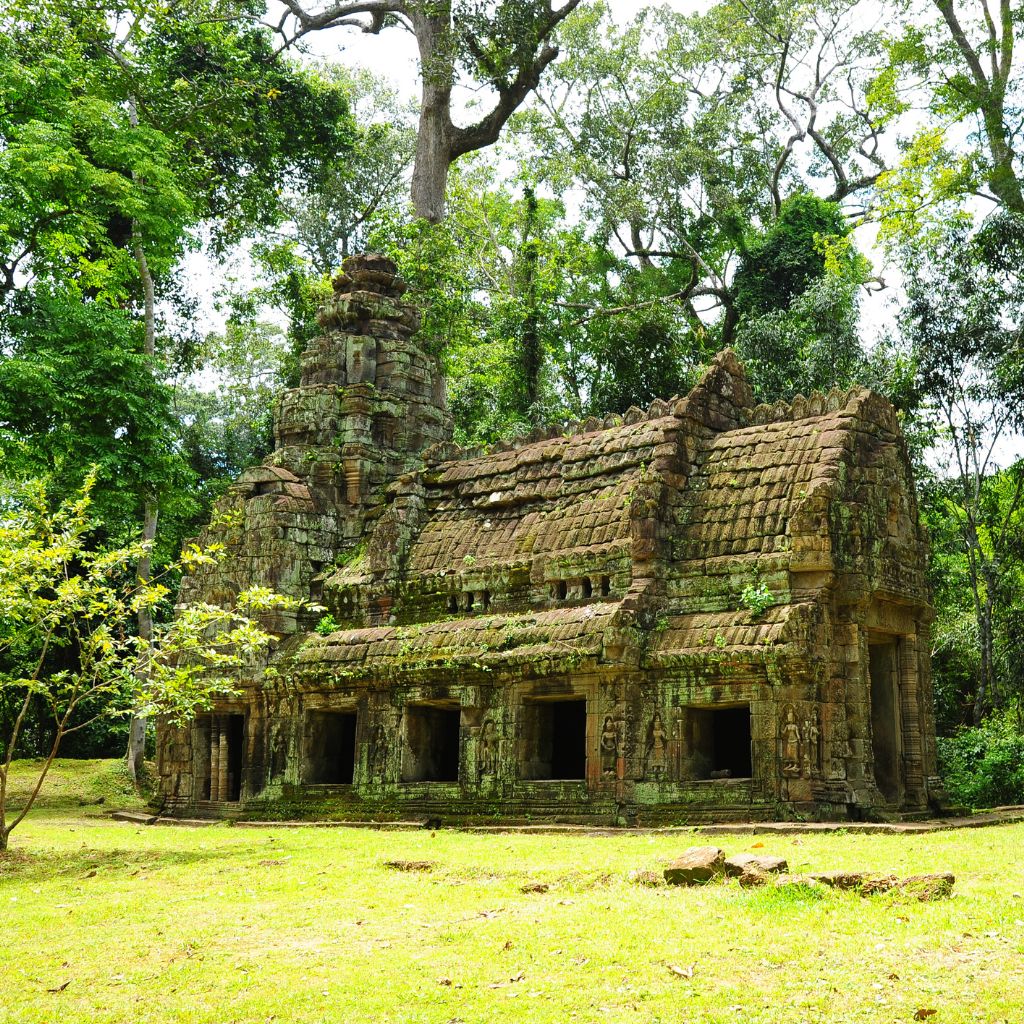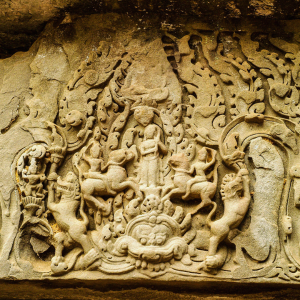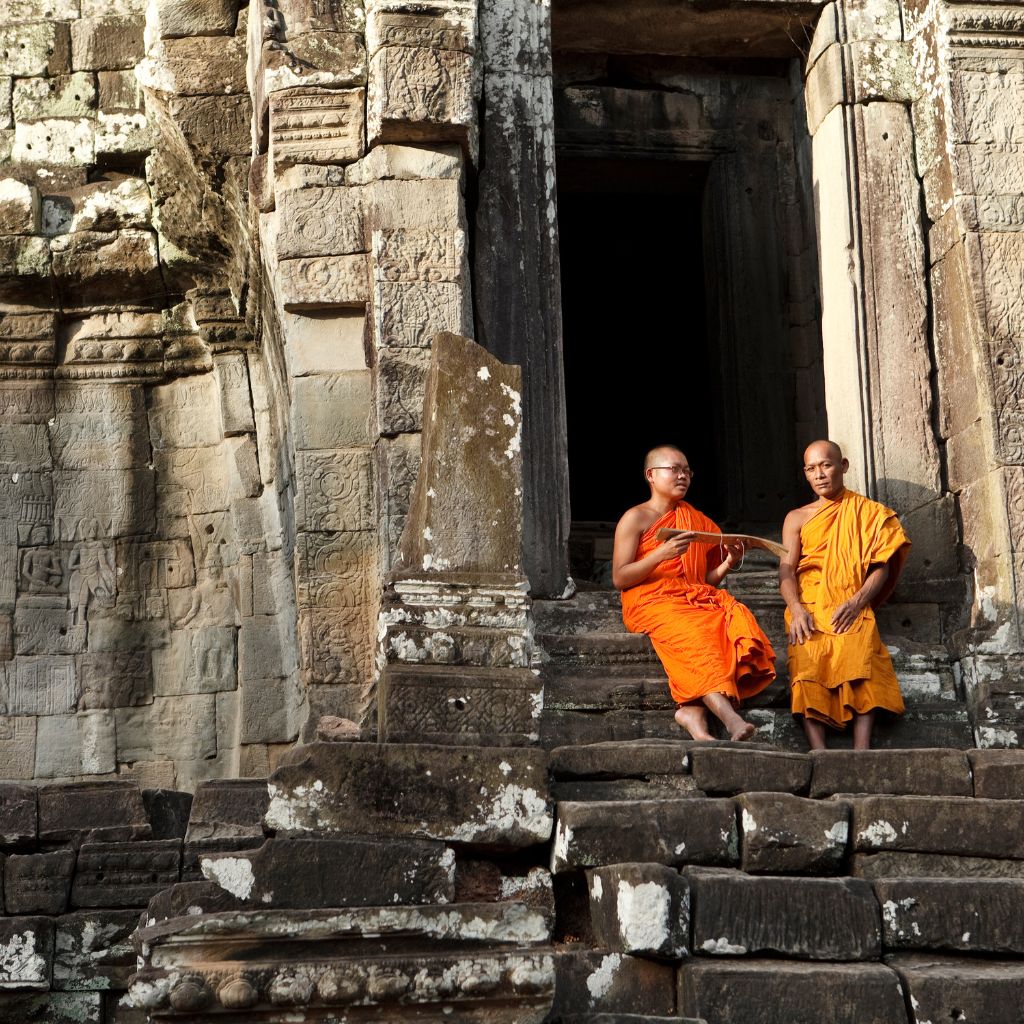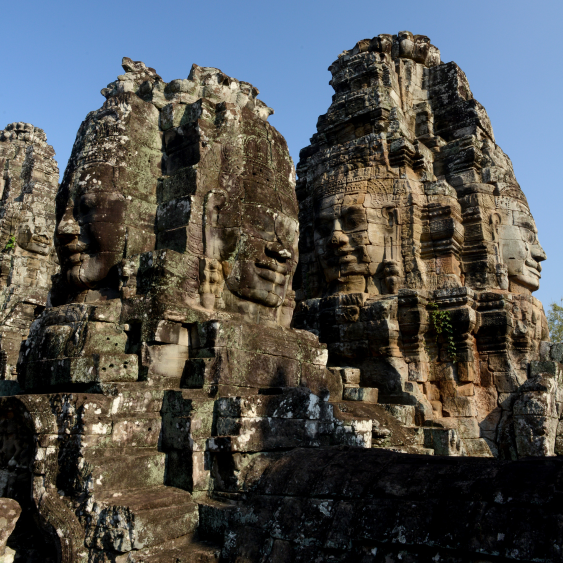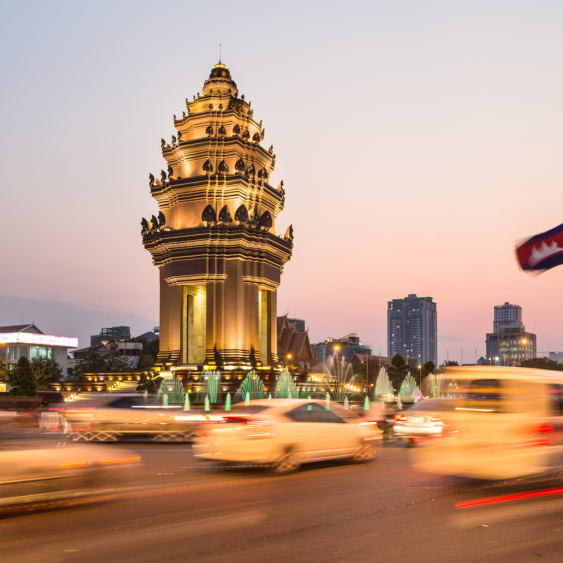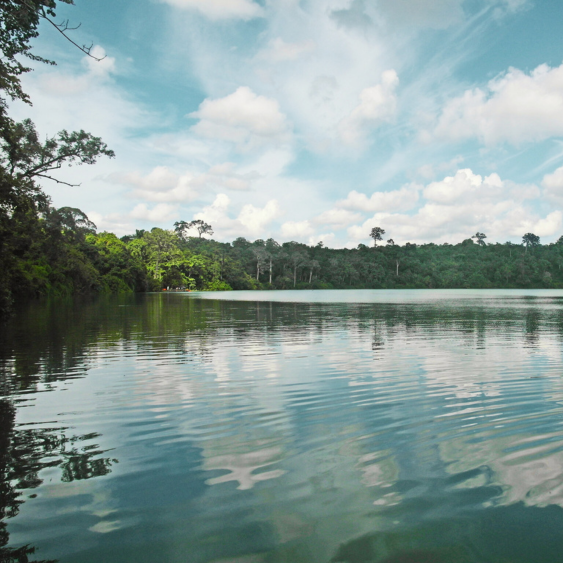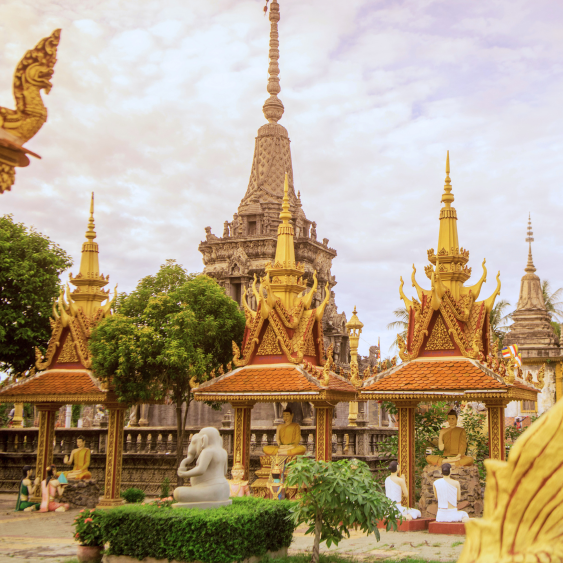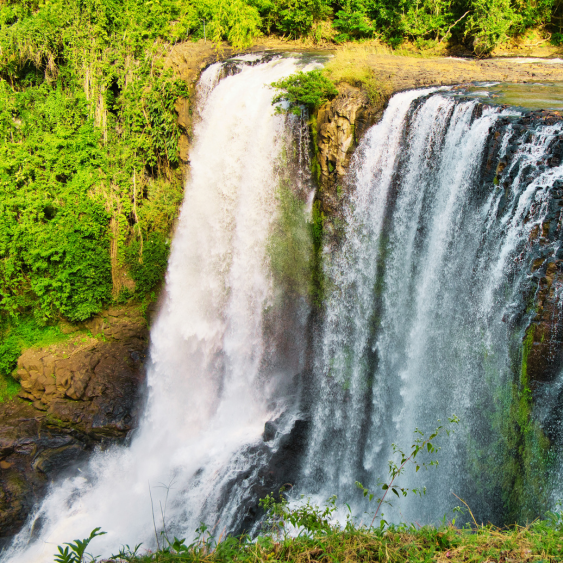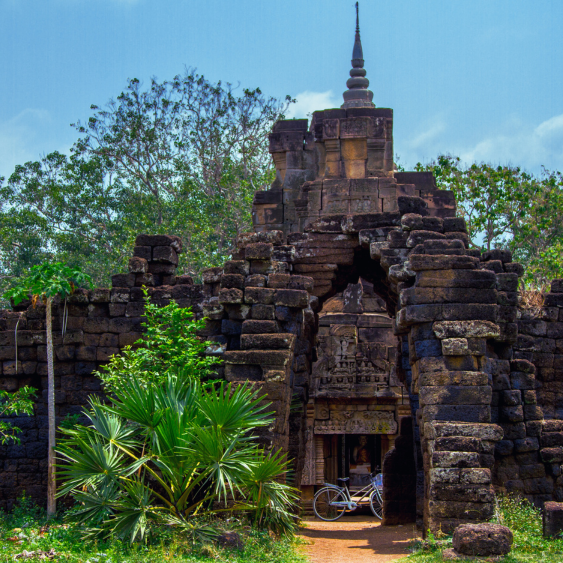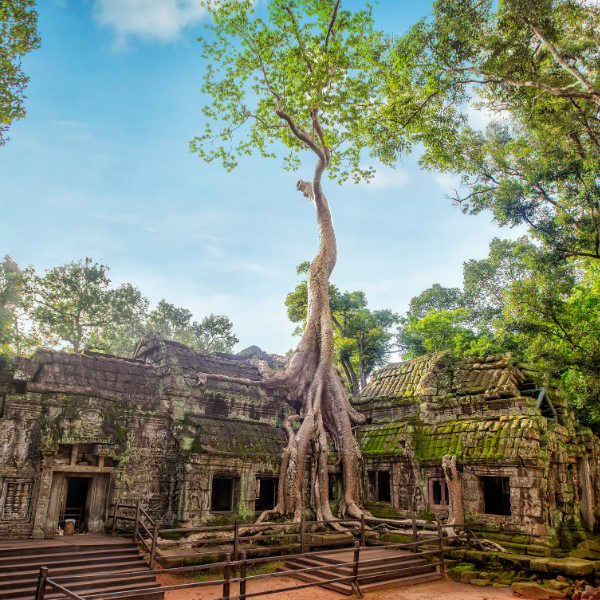
CAPITAL CITY
The Capital City of the Kingdom of Cambodia is Phnom Penh.SIZE
Inland area: 181,035 Km2 Length: 450 Km Width: 580 km at the widest point.GEOGRAPHICAL SITUATION
Located on the South Eastern peninsula of what was known as Indochina, Cambodia shares its borders with Thailand to the West, Thailand and Laos to the North and Vietnam to the East. The Gulf of Thailand lies to the Southwest. The country has a coastline of 435 km and the two dominant topographies varying from coastal plains to mountain rangesPOPULATION
Cambodia has 16.59 million (2021) inhabitants with an average density of 80 inhabitants/km2. The most populated province and also the largest is Khompong Cham, where 14.1% of Cambodians live. 90% of the population is ethnic Khmer (Cambodian). The rest of the population is made up of Chinese, Vietnamese, Muslim Chams and hill tribe minorities in the Eastern part of the country. The dominant religion is Theravada Buddhism.LANGUAGE
Khmer is the official language and English is generally spoken and understood everywhere. A guide is, however duly recommended as language can be a problem outside the main cities for people who have no knowledge of the Khmer language.CURRENCY
Though Riel (KHr) is the official currency, the US dollar is the common currency in Cambodia. Many businesses, especially hotels, airlines, restaurants, souvenirs shops, set their prices in USD and all expenses can be paid in USD even minor ones. In the West of the country, use of Thai Baht is also commonplace. At the time of writing exchange rate is US$ 1 = 4053 Riel, and 1 Euro = 4441 Riel (2022). You can change Euros into USD, though the exchange rate is not always very competitive. There is no need to change your USD into local currency. Small bank notes of 10 or 20 US dollars are enough. Against payment in USD, the change will be given back to you in local currency as there is no USD cents in Cambodia. Traveller’s cheques can be cashed only at major banks and usually incur a 2 to 5% transaction fee. Visa, Master cards, JCB, CCB and American Express are accepted in top-end hotels, restaurants and shops in the main cities of Cambodia, such as Phnom Penh, Siem Reap and Sihanoukville, but can also be subject to 2 to 3% transaction fees. ATMs (cash dispensers) are now available everywhere in the main towns (Visa, Mastercard). You can withdraw cash in USD only – transaction fees may apply. ATMs from ANZ bank are often available in souvenir shops and in most of the Caltex service stations. Banks are usually open from 08h00 to 15h30 from Monday to Friday. Only a few banks are open half day on Saturday. The best advice is to bring US Dollars in cash. Note that exchange rates for small and big notes vary, however we would recommend you to bring some small notes to settle initial expenses and then carry small riel for minor expenses. 500 and 1000 riel are the most useful denominations. Be careful, banks and foreign exchange offices do not usually take old, scribbled or even stained bank notes.CLIMATE
Cambodia has a tropical monsoon climate with two seasons: dry from October to May and rainy from June to October. During the rainy season it usually rains only in the evening or very early in the morning. Temperatures are warm all year long.
LOCAL TIME
Cambodia is 7 hours ahead of Greenwich Mean Time.ELECTRICITY
In Cambodia electric current is mostly 220V. Sockets are generally of Sockets are both round and flat types. Three-pin plug adaptors can usually be found at local markets. Due to its limited power supply, power cuts are frequent, but most hotels and restaurants in the main cities have their own generators.WATER
It is advisable not to drink water from the tap unless it is boiled properly.TELECOMMUNICATIONS
The telecommunication network includes satellite, landline, mobile, Internet cafes, radio systems and GSM (check with your home provider if roaming is permitted). Otherwise you can buy a telephone card via the local telephone provider M-Phone; approximately 15 USD for around 25 minutes of call to a foreign country. International phone calls can be made from the main post offices, private business centres and hotels. Public phone booths can also be found in the main post offices, hotels and restaurants.HEALTH & MEDICAL FACILITIES
Inoculation for yellow fever is a legal requirement for entry into Cambodia by people coming from an infected area. There is otherwise no vaccination required, but visitors are advised to receive inoculations against hepatitis A and B, typhoid and tetanus and to make sure whether anti malaria treatment is necessary depending on the region they travel to. Phnom Penh and Siem Reap have good hospitals staffed with foreign medical personnel, however for life threatening injuries it is advisable to be evacuated to Bangkok or Singapore and we strongly recommend that you arrange medical travel insurance.TRANSPORTATION
There are two international airports in Cambodia: Phnom Penh International Airport located 20 minutes from the town centre and Siem Reap airport, 7 km from the heart of the town. Road networks have improved but still need to be upgraded in some areas. It is reasonable to count an average speed of 50 km / hour. By speedboat, it takes 6 hours from Phnom Penh to Siem Reap. This journey is not recommended for elderly people and groups. Helicopter sightseeing in Angkor has become available using safe helicopters flown by qualified pilots.DRIVING
In Cambodia, vehicles drive on the right side of the road. A Cambodian driving licence is required to drive in Cambodia, including motorcycles. Holders of International Driving Permits can apply for one at a cost of US $25. Some local travel agencies can arrange a licence for an additional administrative fee. Driving without a licence may invalidate your travel insurance in the event of an accident. Check with the rental company what insurance is included in the hire. Drivers not in possession of a valid Cambodian driving licence have had motorcycles impounded with the police imposing a hefty charge for release. Renting a motorbike is possible in Phnom Penh and Sihanoukville but not in Siem Reap. For security reasons, we do not recommend it in Phnom Penh to inexperienced drivers.COOKING
Cambodian food is closely related to the cuisines of neighbouring Thailand and Laos and, to a lesser extent, Vietnam and there are some distinct local dishes. Curries, stir fried vegetables, rice, noodles and soups are staples of the Khmer diet. Sea food and fish are both abundant and delicious. Cambodia is well known in the region for its Prahok, a strong, fermented fish paste used in a variety of traditional dishes.SHOPPING
In Cambodia all sorts of goods and manufactured products can be found. From antiques, silver items, jewelry and gems to silk, Cambodia offers a wide range of beautiful handicraft products. You can also take the opportunity to purchase an ounce of the famous Kampot pepper. Prices displayed are usually fixed, but in other cases, bargaining is recommended.TIPPING
Tipping is not mandatory although it is appreciated. Note that prices in hotels and restaurants usually include 10% for VAT and 5% for service charges.ACCESS
Please find below a list of carriers offering services into Cambodia:- Air Asia
- Asiana Airlines
- Bangkok Airways
- Cambodia Angkor Air
- China Airlines
- China Southern Airlines
- China Eastern Airlines
- Dragon Air
- Eastern Airlines MU
- Eva Air
- JetStar Asia
- Korean Air
- Lao Aviation
- Malaysia Airlines
- Shanghai Airlines
- Siem Reap Airways International
- Silk Air
- Thai Airways
- Vietnam Airlines
VISA AND PASSPORT
A visa is compulsory to enter Cambodia except for citizens of the Philippines, Singapore, Vietnam, Laos, Malaysia and Thailand. To obtain a visa, you must first ensure your passport is valid for at least 6 months after your return date. There are 3 options at the moment to obtain a visa for Cambodia: – You can obtain your visa on arrival at the international airports of Phnom Penh and Siem Reap. Visas upon arrival are also available for people arriving overland from Thailand at Koh Kong, Poi Pet, O’Smach and Pailin checkpoints and from Vietnam at Chau Doc and Bavet-Moc Bai checkpoints. – For people arriving from Laos at Veungkham semi-official border crossing, both Lao and Cambodian visas must be arranged prior to arrival. Identity pictures are required. Visas can be acquired directly at Cambodian Embassies and Consulates abroad. You can apply via the official website of the Ministry of Foreign Affairs of the Kingdom of Cambodia (http://evisa.mfaic.gov.kh/) to obtain an electronic visa.BEFORE GOING
If you are travelling to Cambodia, light clothing is appropriate all year round though a jacket or a sweater may be useful in the evenings in December and January. Although you can find all these products in Cambodia, we also recommend you take a mosquito repellent, a high factor sun block, a cap or a hat, sunglasses, a raincoat and a small bag to carry a few things in case you have to leave your big suitcases at the hotel for a few days.OTHER DESTINATIONS

VIETNAM
From the latticed mountains in the North, through the dramatic rivers and caves of central Vietnam, down to the pristine beaches and tropical islands in the South, Vietnam’s natural landscape has something for anyone seeking a revitalizing escape. In the ancient streets of Hanoi and the bustling alleyways of Ho Chi Minh City – or Saigon as it used to be called – restaurants, art galleries, museums, and elegant boutiques sit alongside stylish street-side cafes and contemporary bars. Vietnam’s heritage and vibrant culture are finding new life as the country once again enjoys peace and emerging prosperity.
Read more
LAOS
Landlocked and, to some extent, 'culture-locked,' Laos provides visitors with a sense of returning to a more relaxed time, where the urgency of modern life is wonderfully absent. Even in the capital, Vientiane, life ambles along only a little faster than the languid Mekong River that flows past the city. In the historic royal city of Luang Prabang – a UNESCO World Heritage site – hundreds of monks in saffron robes glide between centuries-old temples. In this historic city, you will also find luxurious boutique hotels and an incredible food scene drawing on French and local traditions. Outside of the cities, visitors can discover the haunting Plain of Jars and the majestic Four Thousand Islands (Si Phan Don), where the Mekong River expands, and its waters gather pace.
Read more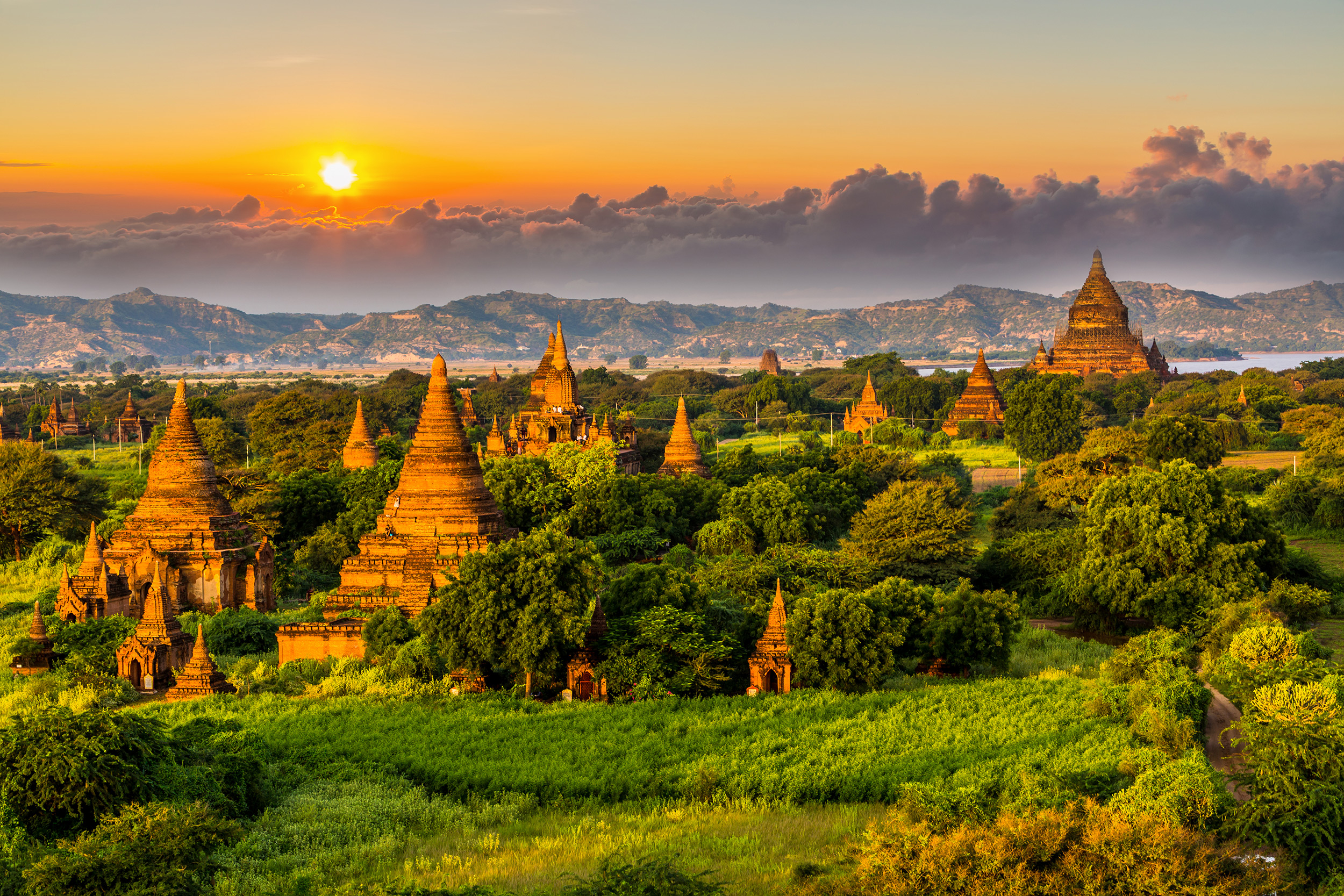
MYANMAR
It was only relatively recently that Myanmar emerged as one of Southeast Asia’s most enticing destinations to visit. From the islands of the Andaman Sea in the south, right up into the Eastern Himalayan mountain range, Myanmar covers a mesmerizing spectrum of geographic and cultural settings. No wonder Rudyard Kipling once described it as 'quite unlike any land you will ever know.' Rich in archaeological sites, glittering pagodas, colorful festivals, and breathtaking artwork, Myanmar is also blessed with an awe-inspiring range of lush fertile plains, vast virgin jungles, snow-capped mountains, and pristine beaches.
Read more